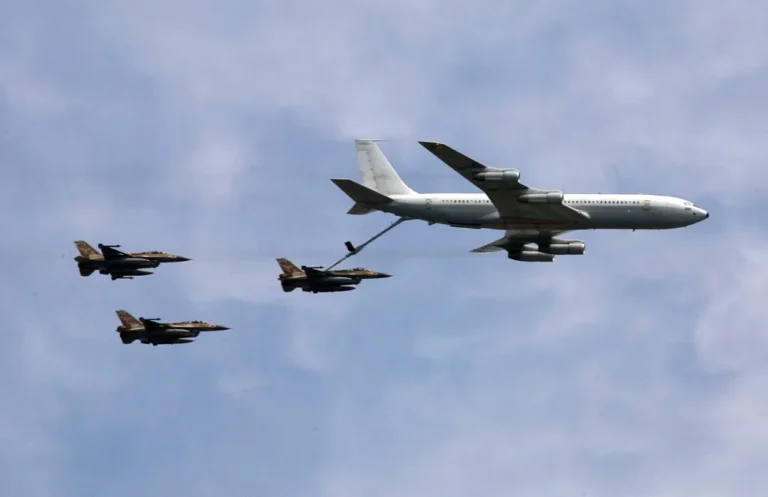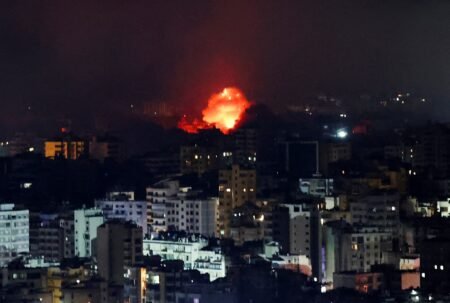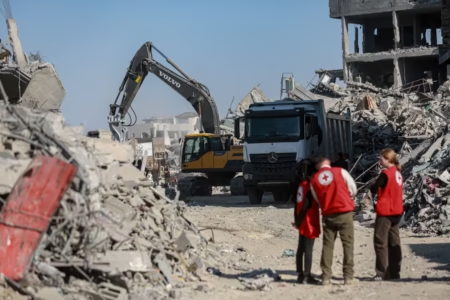More than 28 U.S. Air Force tankers, including Boeing KC-135 Stratotanker and KC-46A aircraft, were tracked flying eastward over the Atlantic this week. These planes took off from multiple U.S. bases in a near-simultaneous movement, creating widespread attention on flight tracking platforms and social media. Although it is unclear whether they were refueling combat aircraft, the sudden surge of airborne tankers has triggered speculation among experts and the public.
This large-scale movement comes at a time of high tension in the Middle East, especially with the ongoing Israel-Iran conflict. While aerial tanker missions are routine, the volume and coordination seen in this deployment are not. Analysts say it could indicate preparation for a significant shift in U.S. policy or a response to fast-changing conditions in the region.
One possibility is logistical support for Israel’s Operation Rising Lion. Israel has limited refueling capabilities, relying on around seven aging 707 tankers. With hundreds of jets potentially flying long-distance missions, this creates a major weakness. U.S. tankers could fill that gap, allowing Israeli fighters to strike deeper into Iranian territory or remain in the air longer. This would also support the delivery of heavier weapons and improve chances of intercepting ballistic missiles launched by Iran.
Another theory is that the U.S. may be preparing to join the conflict more directly. The tanker fleet would be vital for such operations, either for American combat aircraft or to extend the reach of Israeli jets. While this would mark a major change in U.S. strategy, it is seen as a possible reaction if Iran begins targeting U.S. bases or assets in the region. Pre-positioning tankers could ensure readiness for any rapid escalation.
A third concern involves Iran possibly trying to block the Strait of Hormuz. If that happens, the U.S. and Gulf allies would need to launch complex military operations, including surveillance, suppression of air defenses, and maritime patrols. These missions would require a constant supply of fuel in the air. The tankers now moving east could play a central role in enabling that response.
There is also a more practical explanation. The U.S. may be building an aerial bridge between America and the Middle East. This kind of route would be needed to move more jets and bombers into the region quickly. B-2 stealth bombers, for example, might need support to fly long missions aimed at underground Iranian nuclear sites. These flights demand high fuel loads and would rely heavily on tanker refueling over long distances.
The deployment could also serve several of these purposes at once. By spreading tankers across key points along the Atlantic route, the U.S. military ensures that different options remain open. Whether it’s aiding Israel, protecting Gulf waterways, or launching long-range missions, aerial refueling is a key part of modern combat power.
Military sources have not confirmed the exact goal of the mission, leaving observers to piece together the possible scenarios. The absence of large-scale exercises in Europe further adds to the mystery. While Norway is hosting a multinational training event, experts believe it doesn’t justify such a massive movement of refueling aircraft.
The current situation highlights the growing importance of aerial refueling in global military strategy. With tankers in place, the U.S. can respond faster and more flexibly to threats. Whether or not this marks a turning point in the Iran-Israel conflict, it shows clear signs of strategic preparation.
As tensions grow in the Middle East, every move gains new meaning. The skies over the Atlantic may soon offer the first signs of what’s next.







